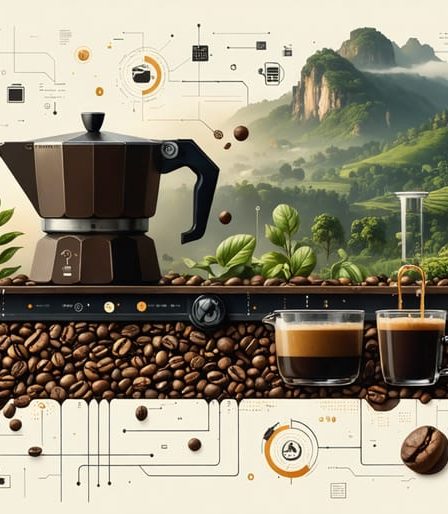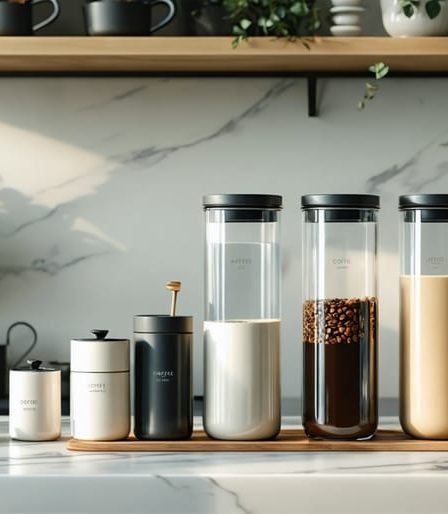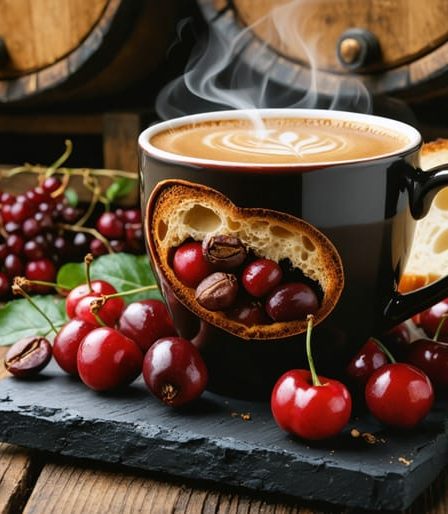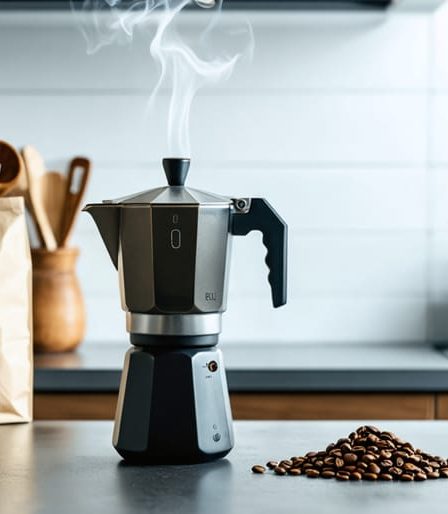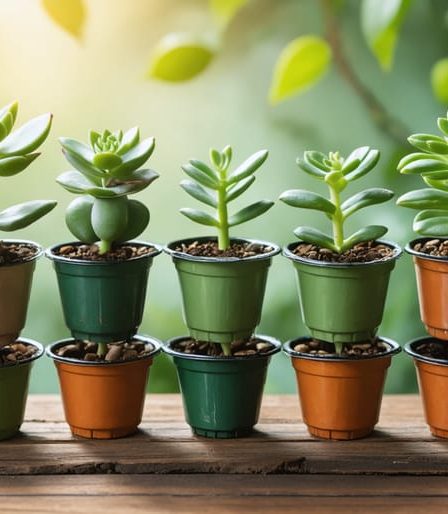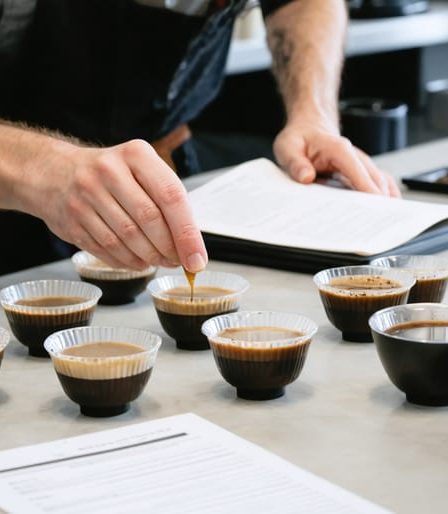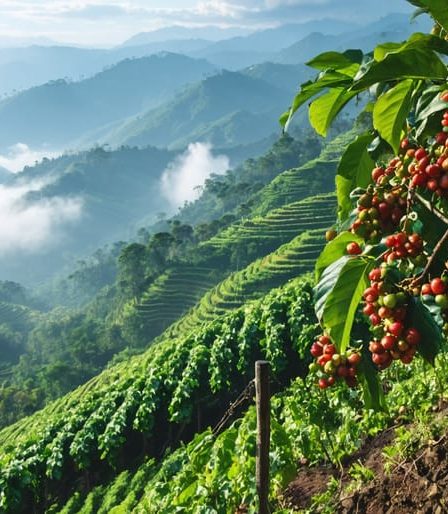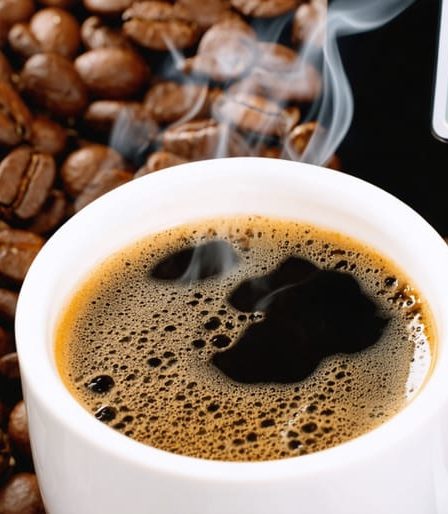Picture this: a world where your favorite coffee arrives at your doorstep perfectly fresh, as if it was just roasted moments ago. Today’s logistics innovations are transforming how we experience coffee, from farm to cup, through groundbreaking solutions that go far beyond traditional shipping methods.
Smart sensors now monitor temperature fluctuations during transport, ensuring your beans never lose their distinct flavors. These tiny technological marvels are revolutionizing maintaining coffee quality …
Beverage Expertise
Specialized knowledge in coffee storage and beverage-related topics
Keep Your Coffee Beans Fresh: Simple Storage Secrets from a Coffee Lover
Store coffee beans in an airtight, opaque container away from direct sunlight to protect their delicate oils and complex flavors. Fresh beans make all the difference when brewing perfect coffee, and proper storage can extend their peak freshness from days to weeks. As a coffee enthusiast who’s learned through countless morning brew sessions, I’ve discovered that keeping beans at room temperature in a ceramic or glass container with a secure seal preserves their aromatic qualities better …
The Secret Behind Your Morning Coffee: How Fermentation Shapes Its Flavor
Every sip of your morning coffee tells a story of careful fermentation – a process that’s far more intentional than most coffee lovers realize. Like wine or sourdough bread, coffee undergoes a fascinating transformation through controlled fermentation, shaping coffee’s unique flavor profiles from bright and fruity to rich and complex. Inside those coffee cherries, naturally occurring yeasts and bacteria work their magic, breaking down sugars and developing the distinct characteristics we&#…
Perfect Coffee Every Time: The Science Behind Your Water-to-Coffee Ratio
Transform your morning brew into a barista-worthy experience by mastering the ideal coffee-to-water ratio. Using 8 cups of water (64 ounces) requires precisely 16 tablespoons (or 1 cup) of ground coffee to achieve that perfect balance of strength and flavor. While this 1:16 ratio serves as the golden standard for perfect coffee brewing techniques, feel free to adjust slightly based on your taste preferences. For optimal results, use filtered water at 200°F and freshly ground beans, allowing the full …
Smart Ways to Give Your Coffee Pods a Second Life (That Actually Work)
Every morning, millions of coffee lovers reach for their single-serve coffee makers, but those convenient little pods are creating a mounting environmental challenge. With over 40 billion coffee pods ending up in landfills annually, finding sustainable solutions has become more crucial than ever. The good news? Recycling coffee pods isn’t just possible—it’s becoming increasingly accessible and creative. From dedicated recycling programs offered by major brands to innovative upcycling projects, there are numerous ways to enjoy your perfect cup of coffee while minimizing your environmental footprint. Whether you’re a …
What Makes a Q Coffee Grader’s Palate So Special (And Why It Matters)
In the world of specialty coffee, Q Graders stand as the industry’s most respected taste experts – think of them as the sommeliers of the coffee world. These highly trained professionals undergo rigorous certification through the Coffee Quality Institute, mastering the art of detecting subtle flavor notes and quality variations that most coffee drinkers might miss. With only about 4,000 certified Q Graders worldwide, these experts play a crucial role in determining coffee quality standards, setting market prices, and ensuring that exceptional beans make their way from farm to your morning cup.
Through calibrated palates …
Mountain-Grown Magic: How Altitude Transforms Your Morning Coffee
Perched high in the misty mountains, where the air is crisp and thin, grows some of the world’s most extraordinary coffee. At elevations above 4,000 feet, coffee cherries develop more slowly, creating beans with a complexity and brightness that coffee lovers dream about. These high-altitude beans, prized by baristas and connoisseurs alike, tell a fascinating story of how elevation shapes flavor.
Picture this: While your typical coffee might grow in humid lowlands, high-altitude beans face daily temperature swings and challenging growing conditions that actually work in their favor. The struggle makes them stronger, developing …
Perfect Coffee Temperature: The Secret to Your Best Cup Every Morning
Pour water between 195-205°F (90-96°C) for optimal barista-quality coffee brewing, as this sweet spot extracts the perfect balance of flavors without burning the grounds. Just like baking the perfect cake, brewing temperature precision transforms your morning coffee from bitter disappointment to café-worthy perfection. Whether you’re a pour-over devotee or French press enthusiast, maintaining the right temperature throughout brewing unlocks hidden flavor notes and creates that velvety …
What Makes Your Coffee Brown? The Science Behind Water and Chemical Changes
Every morning, as you stand before your coffee maker watching that aromatic brown liquid drip into your carafe, you’re actually witnessing an intricate dance of chemistry in action. The transformation of coffee beans and water into your beloved morning brew isn’t just a simple mixing process – it’s a fascinating example of chemical change that happens right in your kitchen. As hot water flows through your ground coffee beans, it triggers a complex series of reactions, extracting over 1,000 different chemical compounds that create that distinctive coffee flavor and aroma you crave. Whether you’re a chemistry …
Perfect Your Coffee: How Your Zip Code’s Water Quality Affects Every Cup
Ever wondered why your coffee tastes different at your friend’s house across town? The secret lies in your zip code’s unique water profile. Just like wine terroir affects grape flavor, your local water composition dramatically impacts barista-quality coffee brewing and everyday drinking water quality.
From mineral-rich mountain springs to chemically-treated city supplies, each neighborhood’s water tells its own story through distinct characteristics. These variations don’…

